Diatomaceous Earth
Diatomaceous Earth (DE) is a powerful, natural substance derived from the fossilized remains of microscopic aquatic organisms called diatoms.

Diatomaceous earth is a powdery substance that's increasingly gaining the attention of gardeners seeking an organic solution to pest control. It is derived from the fossilized remains of diatoms, a type of algae whose skeletons are rich in silica.
This natural product is not just effective for combating pests but is also lauded for its soil conditioning properties.
As we make strides toward more sustainable gardening practices, diatomaceous earth serves as an admirable ally to maintain the health of our gardens without relying on synthetic chemicals.
Integrating diatomaceous earth into our gardening regimen can contribute significantly to our plants' vitality. It works by penetrating the exoskeleton of insects upon contact, dehydrating them, and providing an ecological approach to pest management.
Besides its prowess in pest deterrence, diatomaceous earth adds to soil health by providing essential trace minerals and improving its drainage capabilities.
Understanding Diatomaceous Earth and Its Components

Origin and Composition
Diatomaceous earth originates from the fossilized remains of diatoms, which are a type of algae. These microscopic creatures had cell walls composed of silicon dioxide, or silica, contributing to the high silica content in diatomaceous earth. When diatoms died, they settled in ancient waterways and, over eons, accreted into thick, siliceous deposits that we mine today.
The main component of diatomaceous earth is amorphous silica. This form of silica is different from crystalline silica; it has a less structured form, which is less hazardous to health. Amorphous silica is what gives diatomaceous earth its properties that are useful in gardening, such as its abrasive nature and moisture-absorbing qualities.
Types of Diatomaceous Earth
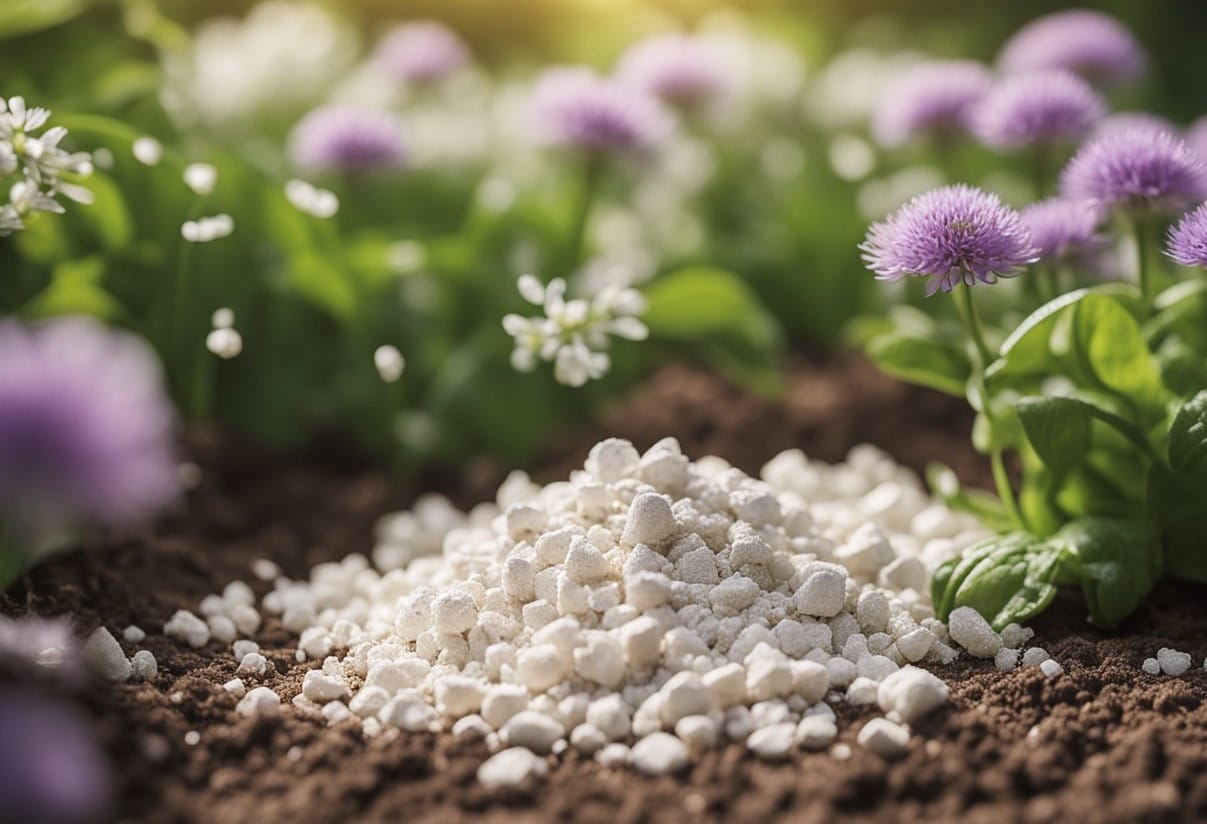
When considering diatomaceous earth for gardening purposes, it's crucial to distinguish between the two main types:
- Food-Grade Diatomaceous Earth: This type is the only kind recommended for use in gardens. Its natural substance is recognized as safe for application around edible plants, and it's effective as a non-toxic pest control method.
- Filter-Grade or Pool Grade Diatomaceous Earth: This type is treated with high heat, which increases its crystalline silica content. Due to this, it's not suitable for gardening as it poses respiratory hazards and is not approved for use around food crops.
Diatomaceous Earth in Pest Control
In our gardens, managing pests without resorting to harsh chemicals is a priority for many of us. Diatomaceous earth stands out as a non-toxic option that targets a wide range of garden pests while being safe for use around our homes.
How It Works Against Pests
Diatomaceous earth (DE) is a powdery substance made up of fossilized remains of diatoms, a type of algae. When applied in the garden, its abrasive nature affects the exoskeleton of insects. It causes them to dehydrate and die by absorbing the oils and fats from the cuticle of their exoskeleton, leading to dehydration. This mechanical action ensures pests cannot develop resistance to DE, as they can with chemical insecticides.
Target Pests and Efficacy
- Slugs and Snails: DE can create a barrier that is difficult for these pests to cross.
- Ants: Sprinkling DE around plants can deter ant infestations.
- Aphids: A light dusting on affected plants can help control these sap-suckers.
- Mites: They can be combated effectively when DE is applied to affected areas.
DE is generally effective against crawling insects with an exoskeleton. However, it is less effective when wet, so we must apply it during dry conditions to maintain its potency.
Precautions for Beneficial Insects
While DE is non-toxic to mammals and humans, it can also affect beneficial insects like bees. To protect our helpful pollinators, we apply DE in the evening when bees are less active, and target it carefully to avoid areas where beneficial insects frequent. It's best to use DE in moderation and place it directly where pests are observed rather than as a broad spectrum treatment.
Application Guidelines for Garden Use

Applying diatomaceous earth in our garden requires careful consideration of timing, method, and safety. We'll guide you through the best practices to ensure effective pest control while safeguarding our health and the environment.
When and How to Apply
Timing: The most effective time to apply diatomaceous earth is early in the morning or after a light rain when the leaves are moist. This helps the dust to adhere better. It's also advisable to apply when pest activity is at its peak.
Method:
- Dry Application: For dry application, dust the food-grade diatomaceous earth lightly onto the soil around the plants or directly on the leaves. Ensure it forms an unbroken barrier around the plant stems to prevent pests from reaching the plants.
- Wet Application: To apply diatomaceous earth as a spray, mix four tablespoons of the powder per gallon of water. This mixture allows for adherence to the tops and undersides of the leaves, especially in areas where dry powder would not stick.
Application Safety Measures
Personal Protective Equipment:
- Mask: Always wear a dust mask when applying diatomaceous earth to prevent inhalation of the fine powder.
- Gloves: Use gloves to protect our hands, as diatomaceous earth can dry out the skin.
Environmental Considerations:
- Avoid During Rain: Do not apply diatomaceous earth if rain is expected imminently, as it will wash away the powder and diminish its effectiveness.
- Reapplication: After rainfall, it's necessary for us to reapply diatomaceous earth to maintain its pest control properties.
Diatomaceous Earth and Soil Health
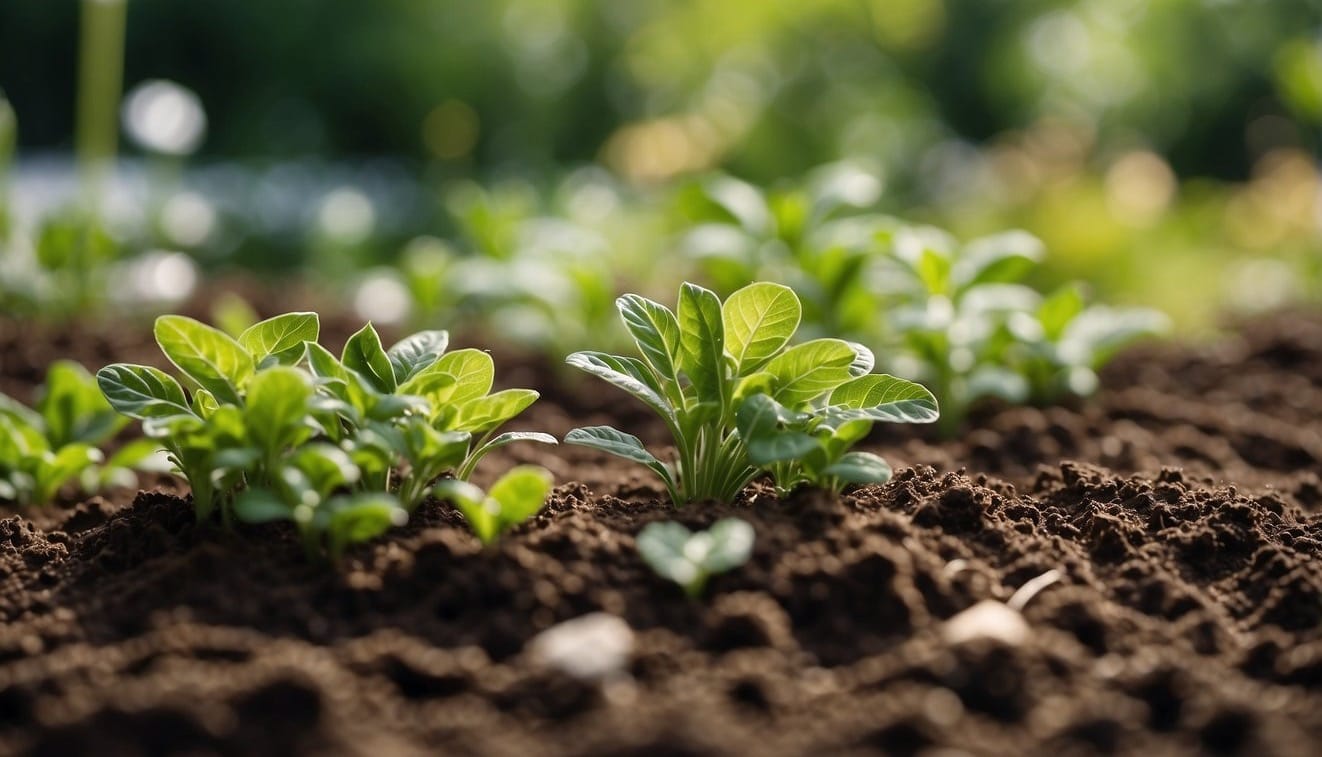
We understand that the addition of diatomaceous earth to soil can have a profound impact on garden health. Here we focus on its role in improving soil quality and influencing water dynamics.
Improving Soil Quality
When we incorporate food-grade diatomaceous earth into our gardening practices, we're tapping into a natural, mineral-rich substance. Comprised mostly of silica, diatomaceous earth can improve the nutrient availability in the soil, leading to healthier and more robust plant growth. It is especially beneficial in providing aeration to dense, compact soils, allowing roots to expand and access vital nutrients.
Benefits of Diatomaceous Earth for Soil Quality:
- Enhances aeration, which aids root expansion
- Increases nutrient availability
Impact on Drainage and Water Retention
Our approach to managing water in the garden benefits from the use of diatomaceous earth. With its porous nature, it helps with drainage, preventing waterlogging by allowing excess water to flow through the soil more effectively. Conversely, it has the capability to hold moisture, which is then slowly released to the plants. This balance helps us maintain soil at an optimal moisture level, especially beneficial during periods of sparse rainfall.
How Diatomaceous Earth Affects Soil Water Dynamics:
- Drainage: Prevents waterlogging by improving soil structure
- Water Retention: Holds moisture which is gradually available to plants
The Effects on Humans and Pets
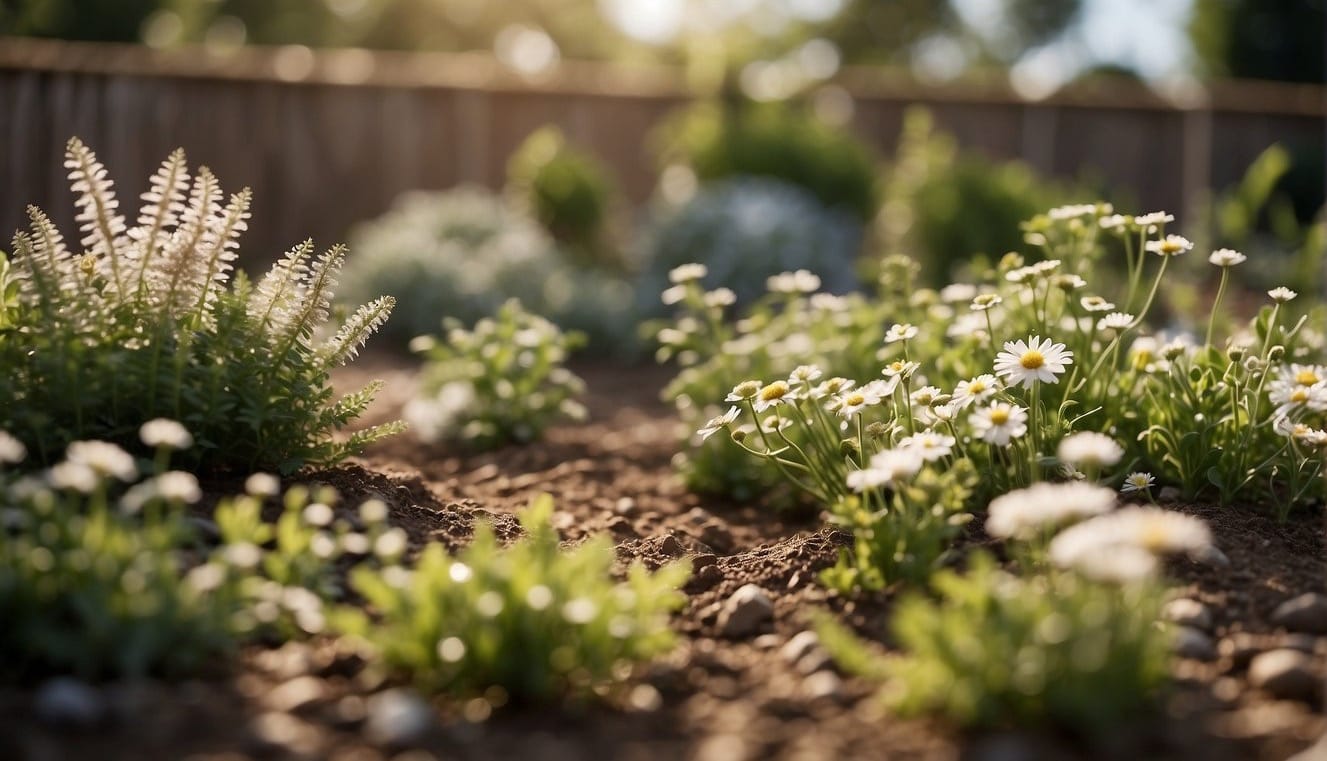
When using diatomaceous earth in gardens, our main concern is to ensure it does not adversely affect the health of humans and pets. We consider its non-toxic nature beneficial but emphasize the importance of proper handling to avoid irritation or harm.
Safety for Humans and the Home Environment
For Humans: Diatomaceous earth, when used correctly, is non-toxic to humans. Still, we take care to avoid inhaling the fine powder, which can irritate the lungs and throat. Here are specific safety measures:
- Inhalation Prevention: Use masks when applying to minimize the risk of respiratory irritation.
- Skin Contact: Although not toxic, it can dry out the skin; wear gloves to reduce the risk of irritation.
- Nail Protection: Gloves also prevent the sharp edges of diatomaceous earth from affecting the nails during application.
- Children's Safety: Keep diatomaceous earth out of reach of children, as they may be more susceptible to the irritant effects.
For the Home Environment: Diatomaceous earth can be beneficial in the home by deterring pests without introducing toxic substances into our living spaces, thus precluding the buildup of chemical resistance often seen with synthetic insecticides.
Considerations for Pets
For Pets: Although diatomaceous earth is also considered non-toxic to pets, we are vigilant about their exposure to it:
- Avoiding Ingestion: Keep it away from pet feeding areas to prevent accidental ingestion.
- Reducing Respiratory Exposure: Apply it in a manner that prevents pets from inhaling the dust.
- Skin and Fur Contact: Watch for dry skin or irritation on pets and wash the substance off with water if they come into contact with it.
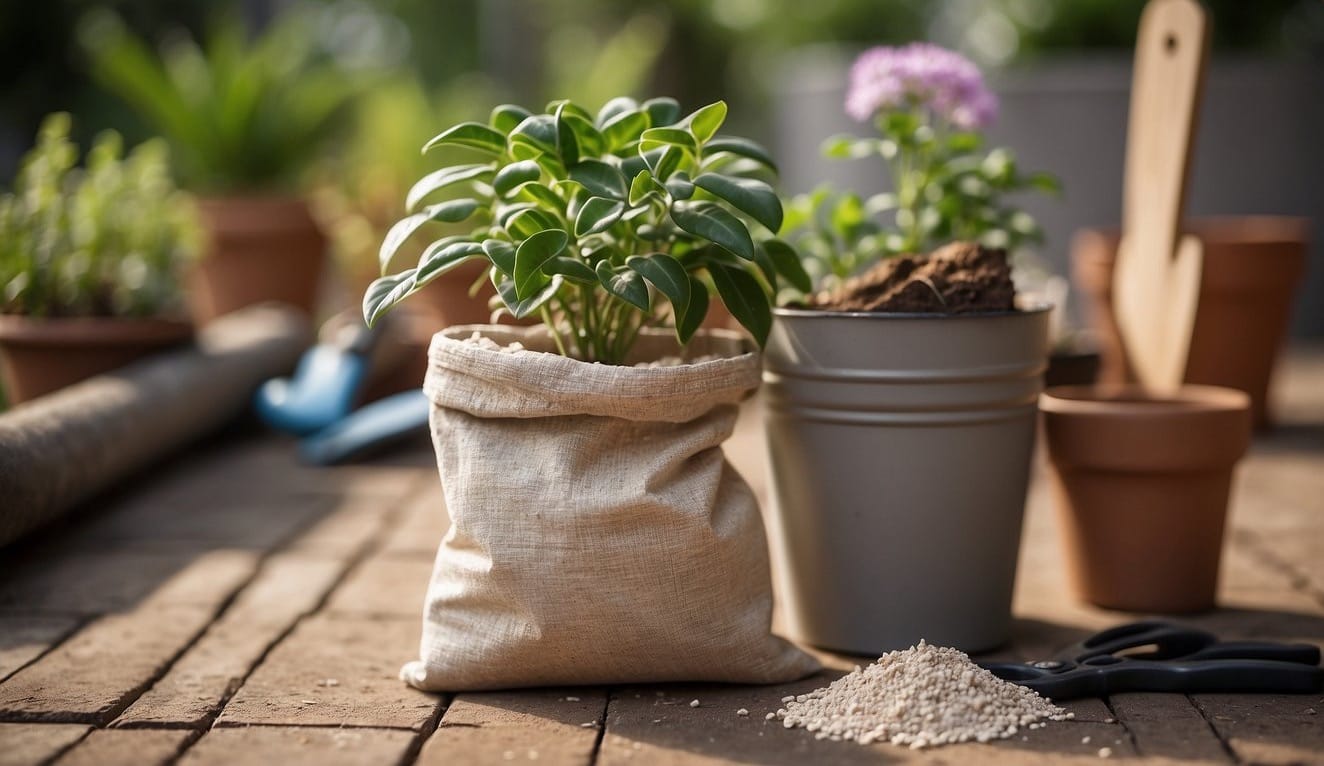
Alternative Uses of Diatomaceous Earth
While diatomaceous earth is widely recognized for its pest control capabilities in gardens, we can also harness its properties in other areas such as livestock care and as a natural supplement, capitalizing on its food-grade quality.
In Livestock Care
We often find food-grade diatomaceous earth playing a role in livestock care, primarily for controlling internal and external parasites. When we add diatomaceous earth to the feed of our livestock, it's understood that it could potentially serve as a natural de-wormer.
Its abrasive properties might make it efficient in scrubbing the animals' digestive systems clear of invaders.
Application in Livestock Feed:
- Add directly to the livestock feed following recommended guidelines
- Frequency: Discuss with a veterinarian for proper dosing schedules
Additionally, we can use diatomaceous earth as a dust bath for chickens. It's a practice that often aims to control mites and lice on birds without the use of harsh chemicals. To ensure its effectiveness and safety, it's critical that we only use food-grade diatomaceous earth for any applications involving animals.
As a Natural Supplement
Food-grade diatomaceous earth is also mined with the intent that it could be an alternative supplement for humans, due to its high silica content.
Silica is important for bone health and the maintenance of healthy skin, nails, and hair. It's suggested that diatomaceous earth might aid in detoxifying the body, which makes it an appealing supplement for those interested in natural health remedies.
Usage as a Supplement:
- Verify the food-grade quality of the diatomaceous earth.
- Start with a small amount to assess tolerance.
- Consult with a healthcare provider prior to supplementation.
Note: We remind readers that the efficacy and safety of diatomaceous earth as a supplement are subject to individual health conditions and the quality of the product. It's important to conduct thorough research and consider professional advice before incorporating it into one's routine.
Environmental Considerations and Sustainability
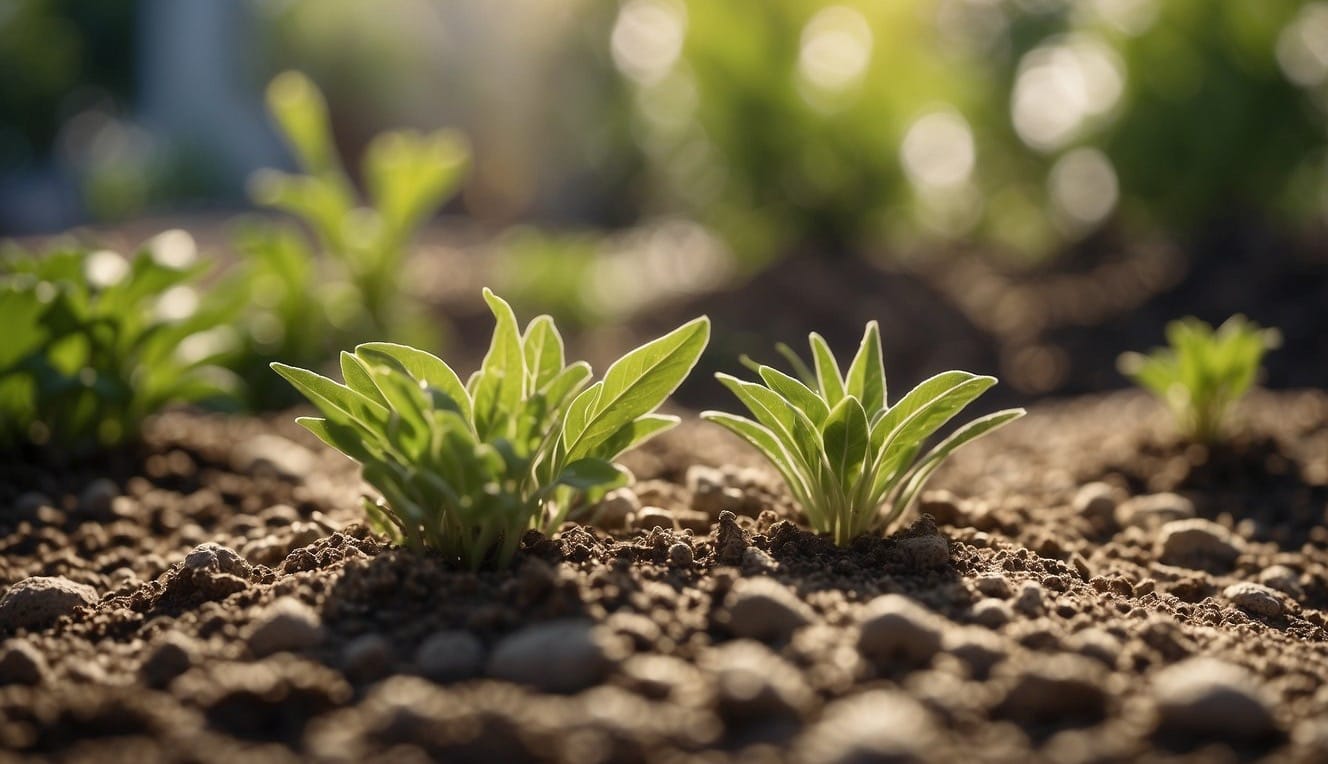
When we discuss the use of diatomaceous earth (DE) in gardening, it's essential to consider its environmental impact and sustainability. As a natural substance, DE offers a more eco-friendly option compared to synthetic chemicals.
Firstly, DE is a natural mineral composed of the fossilized remains of diatoms, tiny aquatic organisms.
Its use reflects a sustainable approach, as DE is a non-renewable resource that must be used responsibly. We recognize its limited availability, fostering a balance between effective gardening practices and conservation.
Organic Farming Practices:
- DE is approved for use in organic farming.
- It contributes to reduced reliance on chemical pesticides.
Benefits to Aquatic Organisms
- DE is inert, posing minimal risk to aquatic organisms when used correctly.
- Overuse or misuse, however, can lead to sedimentation affecting water quality.
Soil Health and Microenvironment:
DE serves dual functions - pest control and soil conditioner. When we integrate DE into the soil, it has the potential to enhance drainage and nutrient retention, supporting robust plant growth.
Minimal processing:
- Food-grade DE is often unaltered, retaining its natural state.
- The minimal processing required for DE reduces the carbon footprint associated with its use in gardening.
Frequently Asked Questions
In our gardening experience, we've encountered several common questions about using diatomaceous earth. Here, we address these inquiries with clear and accurate information to guide you through its application in your garden.
What is the recommended method to apply diatomaceous earth to garden plants?
To apply diatomaceous earth, we first identify the affected area and then lightly dust the powder onto dry plant surfaces.
It's important to cover both the tops and undersides of the leaves where insects are likely to travel.
Which garden pests can be controlled effectively with diatomaceous earth?
We use diatomaceous earth to control a range of garden pests, including slugs, beetles, and aphids.
Its abrasive nature helps to manage these pests by desiccating their exoskeletons upon contact.
Is diatomaceous earth safe to use on indoor plants, and how should it be applied?
Yes, diatomaceous earth is safe for indoor plants. We typically apply a thin layer to the topsoil or directly on the foliage, making sure the plant is dry to ensure adherence of the powder to the plant's surface.
Are there specific plant species that benefit most from the application of diatomaceous earth?
While diatomaceous earth is versatile, we find it particularly effective for plants that are commonly affected by crawling insects, such as tomato plants, where it helps in controlling pests without using harsh chemicals.
How frequently should diatomaceous earth be applied in a garden setting?
We reapply diatomaceous earth after rainfall or watering since it must be dry to be effective.
Regular observation of pest activity helps us determine application frequency, usually every few weeks during the growing season.
What precautions should be taken when using diatomaceous earth around garden plants?
When using diatomaceous earth, we wear masks to avoid inhalation and goggles to protect our eyes. It can be an irritant.
It's best used in calm weather to prevent drift. We also target application to avoid beneficial insects.


